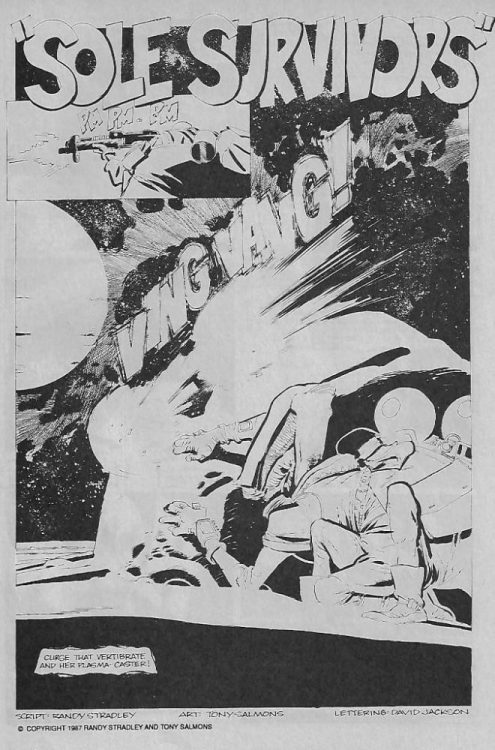As the flow of new comic books begin to dry up we’ve all started to revert to older material. Whether it’s catching up on the series that we’ve been stockpiling or pulling out those old comics that haven’t been read in a few years: back issues are being consumed in great numbers.
The best thing about re-reading, more so than the comforting nostalgia, is the small surprises that the comics can hold.
Recently I introduced my children to the delights of the Alien and Predator franchises via the Aliens Vs Predator movie. All the way through the film I kept thinking “I haven’t read the AvP comics in years” so after the kids had gone to bed I went searching.
I collected the Titan Comics, then the Dark Horse Publication, UK Reprints of the American titles. They started around 1990 and contained a mix of comics and articles relating to the joint franchises. Aliens, Predators, Aliens Vs Predators. They were perfect fodder for a young comic and movie fan.
Some of the comics that they reprinted are still among my favourite reads: the precursor to Aliens: The Female War and Peter Milligan’s Aliens: Sacrifice. There is also a beautiful short drawn by Simon Bisley called The Reapers that has an ending that has forever been etched in my mind.
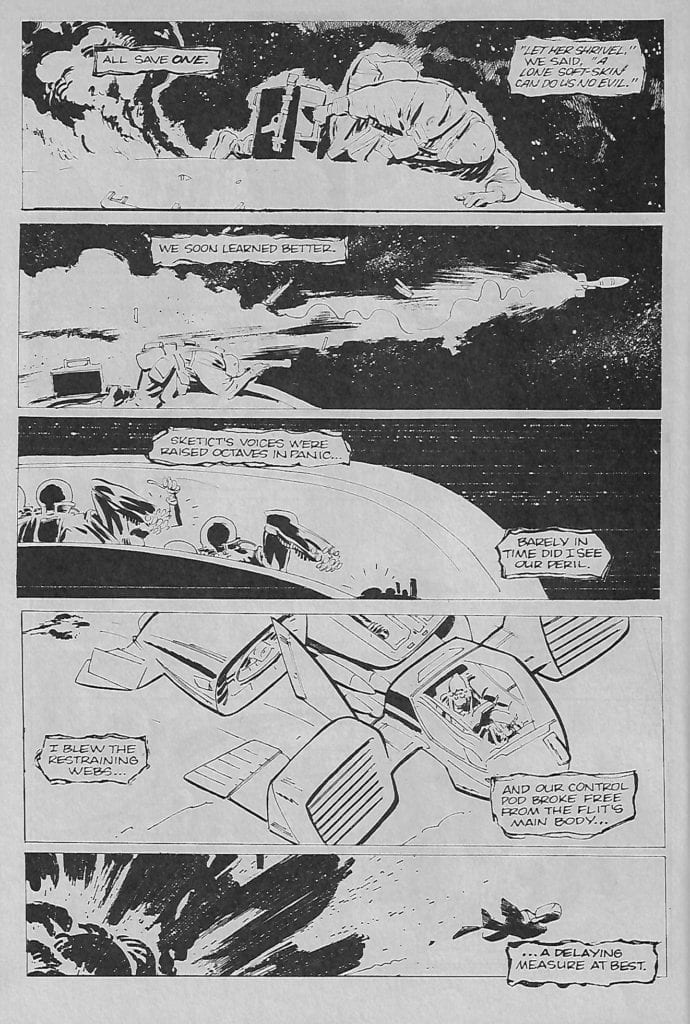
Hidden Pages
However, in Volume 2 Issue 2 there was a free black and white comic that had nothing to do with the Aliens franchise. Until my current read through I had completely forgotten it was there. The small eight page comic is called Sole Survivors and was written by Randy Stradley, art by Tony Salmons, and letters by David Jackson. It is a wonderful example of modern comic book storytelling, turning a rather run of the mill story idea into something more magical and impressive.
But what makes it so outstanding, especially surrounded by the great Aliens stories reprinted in the comic? It is the simplicity of the idea mixed with the, often, abstract nature of the presentation. The comic was originally created in 1987 and it draws on all of the Science-Fiction tropes popular at the time. It then merges them with an older comic book tradition: the trick or surprise ending most famously used by EC in the 1950’s.
Sole Survivors plays up to all of the 1980’s gung-ho machismo while sneakily subverting it. The central character is a strange, insect-like alien who is difficult for the reader to identify with. Remember, this was the 80’s, the science fiction world was packed with bulging muscles, monosomic heroes, and an array of heavy weaponry. Oh, so many massive guns.
The ideal hero was an ultimate, pumped up version of ourselves and when this finally took hold in Comics we got what we got in the 90’s. Stradley and Salmons, however, are challenging that idea of a hero even before it has become the mainstream in comics. To complicate this, or perhaps to highlight it, they make the protagonist, the villain, more recognisably human.
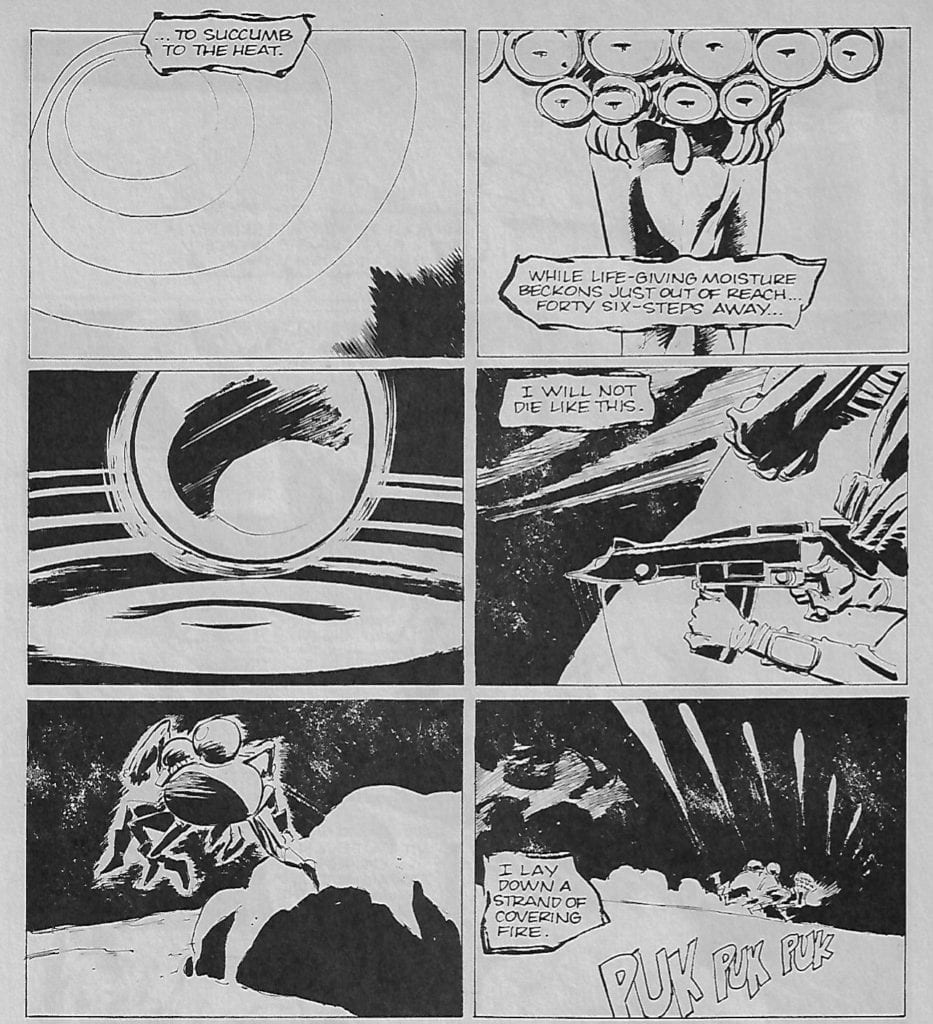
Subtly Subversive
During the standoff in the plot, and the inevitable conflict, we the readers root for the alien: the character who is least like us. This unusual concept is reflected by the abstraction within the art. The panel transitions build emotional responses and challenge the reader to really consider the situation and the two characters. A slow, monotonous dripping of water is contrasted against the life and death struggle as two columns create a tick tock pace in the story.
The Aspect to Aspect jumps heighten the tension while the minimalist element of one side of the page forces the audience to pay closer attention to the other side. The narrative beat away from the character enforces the character’s predicament. It creates an urgency, reiterating the death struggle that is happening.
There is also no consecutive form to the pages. There is a switch between four and five rows of panels per page. The number of panels, and the layouts, also change from page to page not allowing a formal structure to lead the story. This is another contrast to the type of stories that Sole Survivors is referencing.
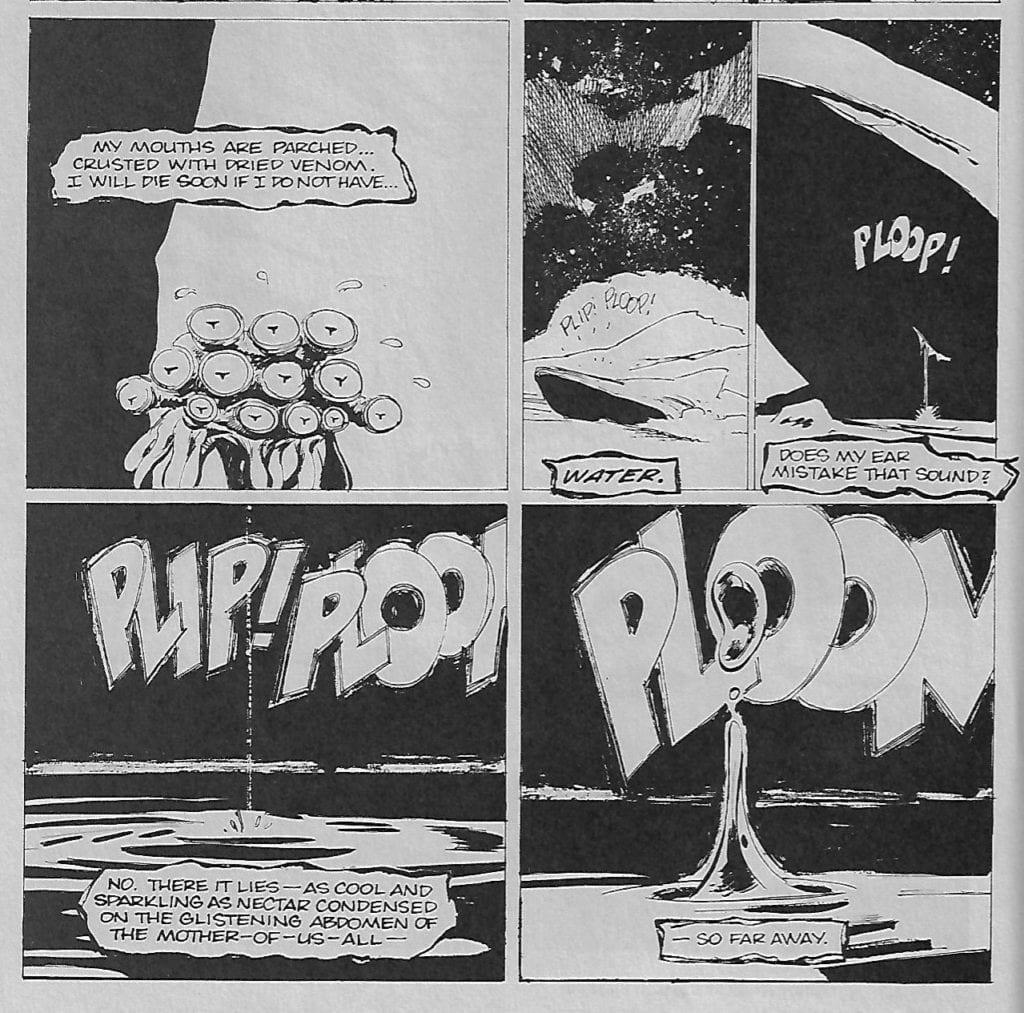
Distracting Style
At this point it is worth mentioning the lettering by David Jackson. His hand-drawn, scratchy and uneven caption boxes and sound effects give the eight pages of comic a self published look. Especially as it was printed on off-white, newsprint type paper.
Jackson mimics the panel layouts, leading the reader across the page often in an unconventional manner. Silent panels and strategically places caption boxes create verbal gaps or hoops of speech that circumnavigates certain images. This creates a challenging reading experience, not something that you would be expecting from such a comic strip.
The sequels to movies like Alien and Terminator, that fed into a number of comics at the time, were all formulaic. Pleasing and simple structures that helped to make them successful. The presentation of Sole Survivors is not formulaic which allows Stradley’s trick ending to work. Just like an episode of the BBC’s Inside No. 9, the creators lull the reader into a false sense of security by making the build up in the story something out of the ordinary. This acts as a distraction so that they can spring the ending, without the audience having had a chance to guess what’s coming.
By subverting the genre and making the readers question the idea of who, or what, the hero of a story can be, the ending of Sole Survivors shocks you as intended. It is a masterpiece of narrative timing. Everything about it, the Art, the page size, even the paper it is printed on, makes you think it’s a cheap page filler. A gimmick by the publisher. Instead, you have a sophisticated, thoughtful piece of art that challenges the crass commercialism of the larger publication it is a part of.
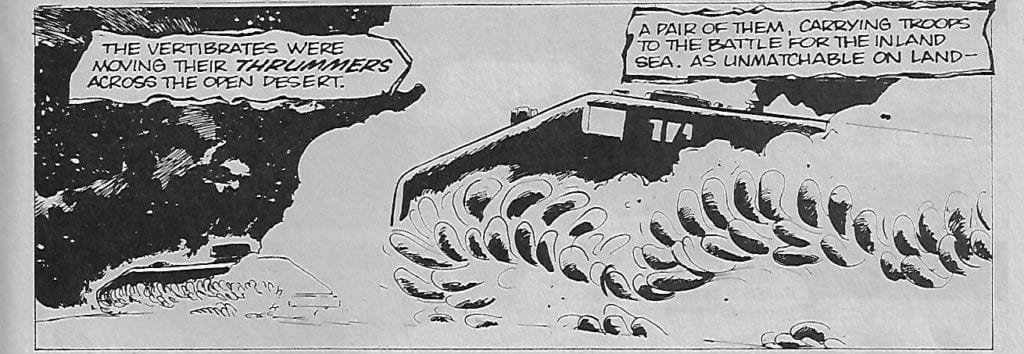
Subverted Conclusion
The entire creative team were working in ways that undermine the mainstream. At a time when comics were becoming cleaner in appearance, more defined and straight forward, Sole Survivors challenged that notion by resembling underground, self published comics. It has more in common with the weekly 2000AD comic than it does the Dark Horse reprints it was published with.
With a wall of commercialism, sequels, and franchises springing up in the cinemas and moving into comic books, Stradley, Salmons and Jackson are already challenging the tropes the audience were just getting to know. This eight page comic in the middle of a blockbuster tie-in contains more depth and genre critique then any of the chest pounding comics that surrounded it.
I enjoy the Aliens and Predator comics. They formed a large part of my early teenage collection and I still read them with some enjoyment today. However, on this current read through, the most enjoyable part has been rediscovering the majestic Sole Survivors and it’s very modern subversion of science fiction tropes.

